Stevia is a remarkable plant that's been around for a long time, yet only recently has started making noise in the health and nutrition market. If you're unfamiliar, stevia is a zero-calorie sweetener derived from the leaves of the Stevia rebaudiana plant.
Known for its intense sweetness, it’s become a popular way to reduce sugar intake while still satisfying the desire for something sweet. Though what is stevia, what are its properties, and what can we use it for?
In this article, we’ll delve into the nitty gritty of the different forms of stevia and how they’re made, their nutritional information, and any benefits or drawbacks to using the natural sweetener to cut back on sugar.
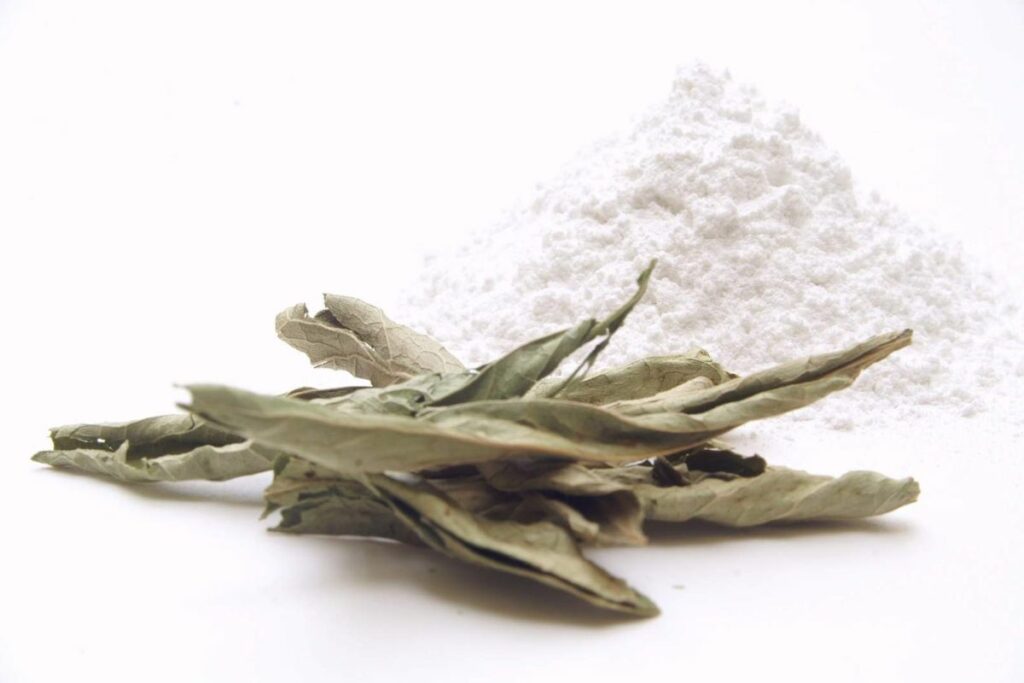
Jump to:
🌿 What Is Stevia?
Stevia, also known as honey leaf, sweet leaf, or candy leaf, is a flowering plant Stevia rebaudiana that’s native to South America, in particular Brazil and Paraguay. The Guarani people of Paraguay were known to have used these unrefined sweet-tasting leaves and crude extract for their food and medicine.
This traditional raw form of stevia was used to sweeten food and beverages by boiling the leaves fresh or dried with water to make pure extracts. From South America, it made its way to East Asia, where the Japanese managed to process it into a highly refined sweetener.
Those same scientists ended up producing the first commercial stevia-derived sweetener in the early 1970s, where it rapidly gained popularity in the country. They did this by using the dried leaves of the shrub or the stevia plants themselves, making them into noncaloric liquid and powdered sweeteners.
Let’s swiftly move on to one of its key properties, its sweetness. The sweetness of stevia comes from the naturally occurring compounds called steviol glycosides, which make stevia extract 200-400x sweeter than sugar.
Even though it has a sweetness far exceeding that of sugar, it contains zero calories, so it’s an excellent alternative to other synthetic sweeteners.

🥄 What Makes Stevia Sweet?
Stevia is a fourth-generation sweetener that’s a herbal shrub with naturally sweet compounds contained in its leaves. The source is about forty natural compounds called steviol glycosides, which are also non-glycemic, meaning it doesn’t impact blood glucose levels.
Certain components like stevioside - and many different forms of rebaudioside A, B, C, D, E, F, and M, the most common being rebaudioside A (or reb A) - are all responsible for the intense sweetness of stevia.
These compounds can be extracted fresh, dried, or processed into powder or liquid form. Though some stevia sweeteners do contain a combination of steviol glycosides and sugar alcohols to create a more balanced taste.
📋 Different Forms of Stevia
Stevia comes in various forms, whether it be liquid or granulated or powdered. These different versions can come in the shape of the natural stevia leaves, pure stevia extract, and stevia mixed with other sweeteners.
Stevia the Herb
The natural shrub stevia was mainly used by indigenous people of South America, who most often utilized its fresh or dried leaves as the sweetener. This practice dates back more than 1,500 years ago, and was used to sweeten yerba mate and other teas.
Compared to the refined stevia products we know today, the herbal form is way sweeter and certainly more natural.
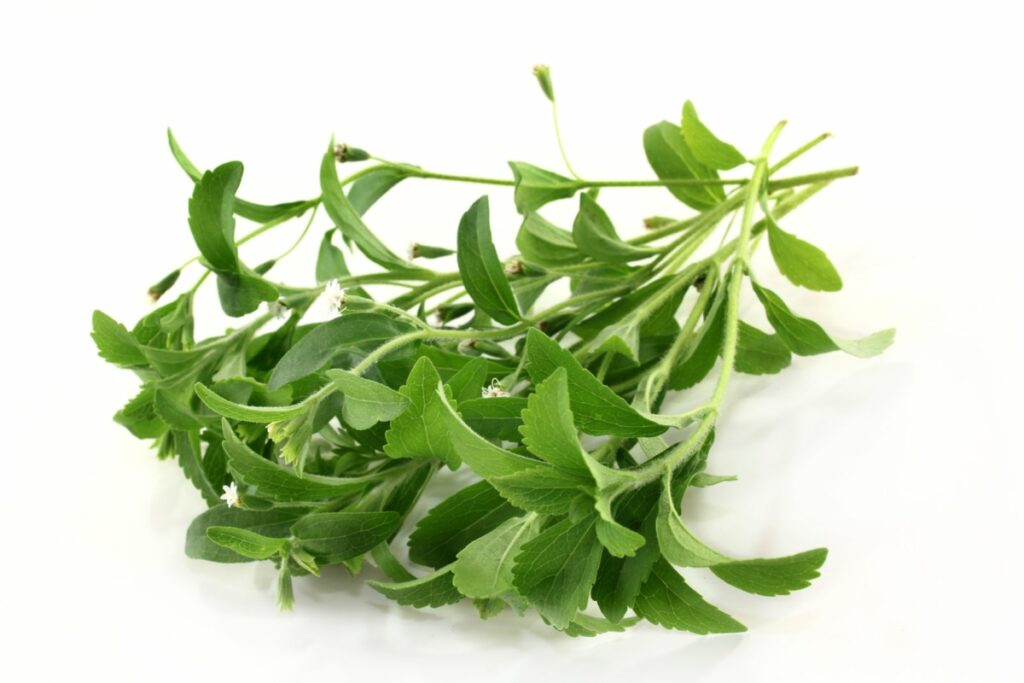
Pure Stevia Leaf Extract
Stevia leaf extract is a minimally-processed extract produced from stevia leaves, usually extracted via boiling in hot water or alcohol and don’t come with additives or fillers. It’s so sweet that only a little bit of sweetener is used in dishes.
Though this form of stevia will not provide bulk to recipes, which is likely why it hadn't become as popular as quickly; all approaches to cooking would need to be adjusted and reformulated.
You should follow the manufacturer’s recommendations for usage before going wild with it. Typically, a half teaspoon to two teaspoons of pure stevia leaf extract is equal to the sweetness of a cup of table sugar, depending on the brand and age of the extract.
Stevia Sweeteners
Stevia sweeteners are highly processed and refined compared to pure stevia leaf extract, and contain additives and other sugars or sugar alcohols. It can come in liquid or powdered form, granules, and sugar cubes.
Liquid stevia is typically a diluted mixture of stevia extract, water, and sugar alcohols, though highly-concentrated liquid stevia extracts are available in the form of drops or syrups, none of which add bulk to dishes.
Powdered stevia are processed with sugars and sugar alcohols. When adding sweetness to recipes, powdered versions provide ease of measurement because they’re produced to have a similar bulk and taste to table sugar. Though this, of course, depends on the brand and manufacturer.
Erythritol is the most commonly used bulking sweetener in stevia, while allulose, monk fruit, maltodextrin, glucose, inulin, and xylitol are other common bulking choices. These additional sweeteners not only improve the flavor balance of extracts, but also make measuring sugar alternatives easier.
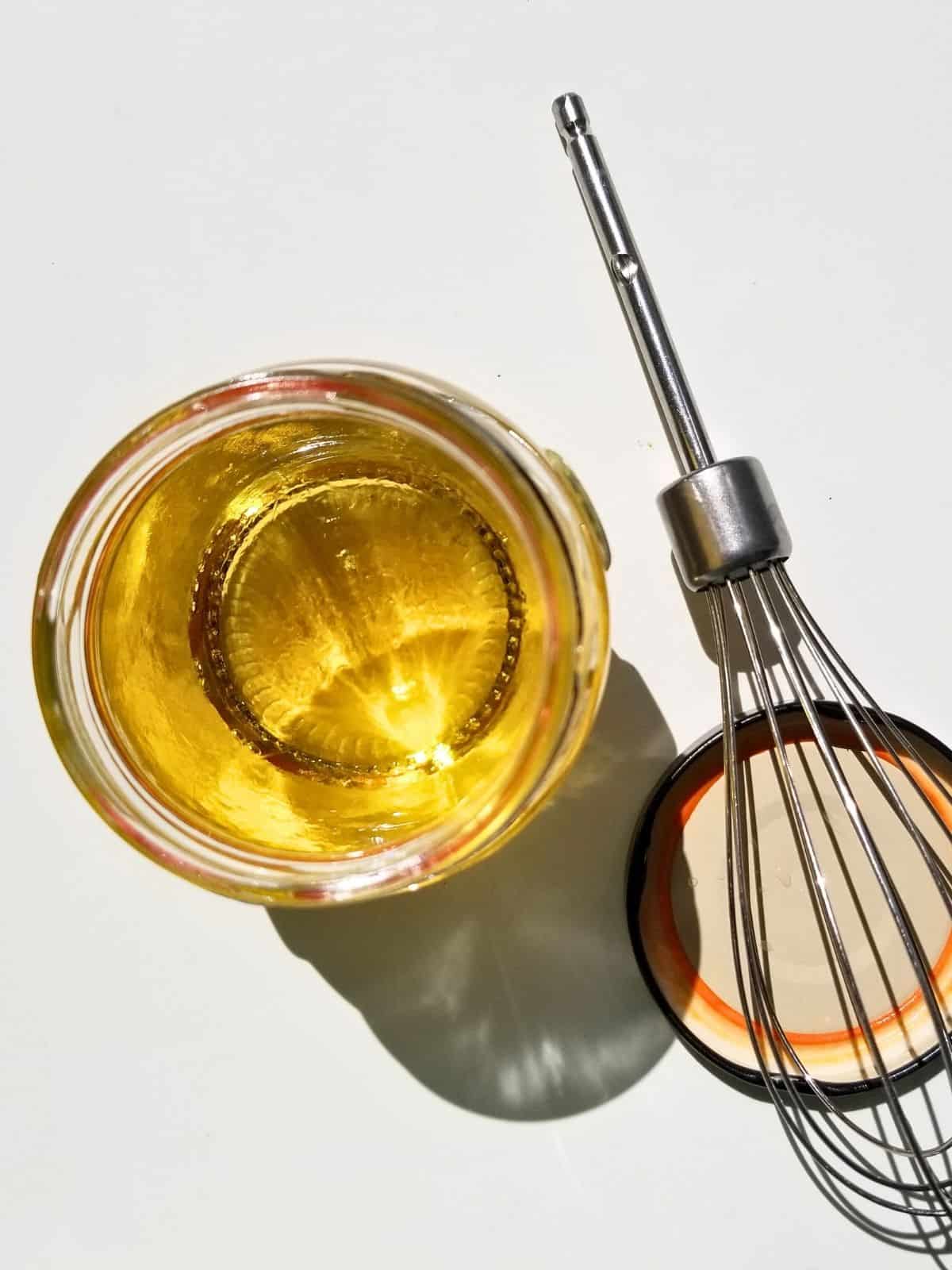
🔍 How is Stevia Made?
The main difference between stevia extracts and sweeteners is how they’re made. Pure stevia leaf extracts go through a small, less refined process to retain most of the plant’s health benefits. Stevia sweeteners, though, involve a larger production process that mass produces a sweetener that mimics regular sugar.
The production of stevia begins with a process called steviol glycoside extraction, which purifies and removes some of the bitter attributes of the crude extract. Now its various forms can mean different steps in its production, though this usually means fewer steps in its natural state and a steady increase toward its commercial form.
The first step in typical commercial production is a treatment with enzymes to initiate plant material synthesis and release the sweet chemicals from the leaves. The leaves are then steeped in alcohol or hot water to extract the sweet components.
This method removes contaminants while isolating the steviol glycosides that give the sweet taste. Though if alcohol is used to extract stevia, it will then have to go through a distillation process, as well.
After the sweet chemicals are extracted, stevia extract is further processed to purify the sweetening chemicals found in the leaves. They can then be filtered using either precipitation, ion exchange, or membrane filtration, where they are then further concentrated.
Water and other sugar alcohols are then added to give the product bulk and adjust the taste. The result is a stevia sweetener that’s significantly sweeter and more closely resembles sugar, all while containing fewer calories.
Not all stevia sweeteners are created equally, though. Some may use pure stevia leaf extracts, while others are synthetically manufactured using a genetically modified yeast strain.
This artificially manufactured variation involves a process called bioconversion and fermentation, which allow for a better-tasting and less bitter rebaudioside, such as Reb M.
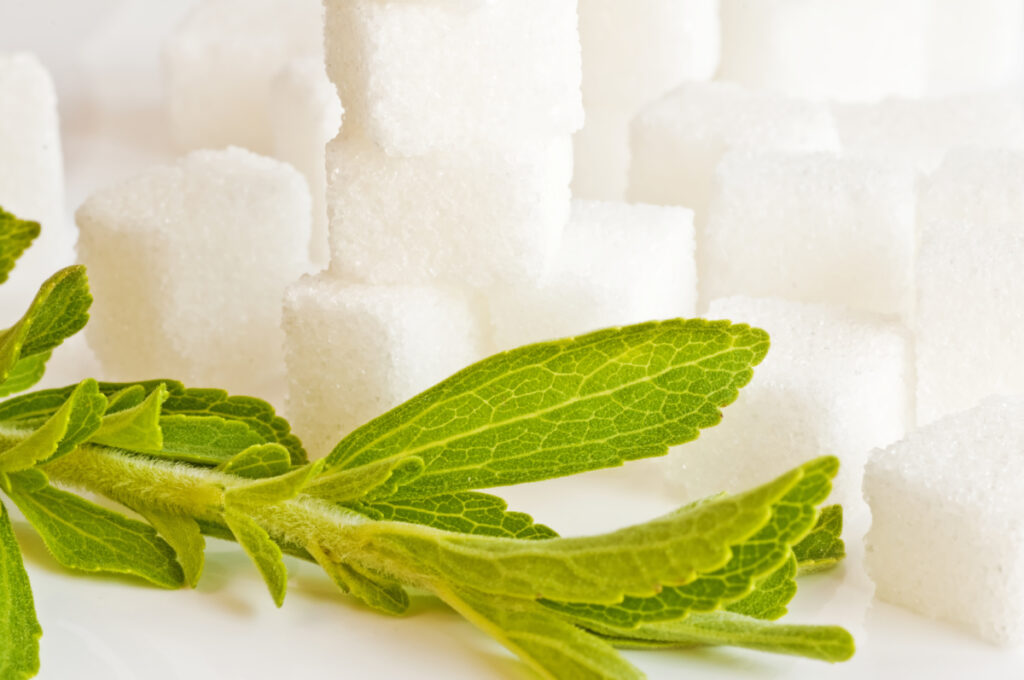
📝 Nutrition and Health
Steviol glycosides, specifically stevioside, are responsible for the sweetness of stevia. This signature sweetness - according to the U.S. FDA - has a level that’s 200 to 400 times that of sugar. Yet, despite its extreme sweetness, stevia contains no calories, making it an appealing alternative for people looking to cut calories and carbs.
They’re stuffed full of nutrients and health benefits, too, such as phenolic compounds that exhibit strong antioxidant properties. This compound is also an important source of water-soluble vitamins, meaning it can help balance nutrient levels.
How Is Stevia Digested By The Body?
Steviol glycosides are not digested by upper gastrointestinal digestive enzymes, nor are they absorbed via the upper section of the gastrointestinal tract. This lack of absorption by the body means it contributes nothing to calorie intake, and also means it doesn’t raise or affect blood glucose levels.
Digestion actually occurs as gut bacteria split off their glucose molecules and then utilize them as an energy source once they reach the colon. Then the remaining steviol backbone is absorbed by the portal vein, processed by the liver, and eliminated in urine.
To back up the safe consumption of stevia, several chronic research and clinical trials in humans have revealed no negative effects from its consumption. In fact, it's one of just three non-nutritive sweeteners declared generally safe for consumption by the USFDA (the others being monk fruit and allulose).
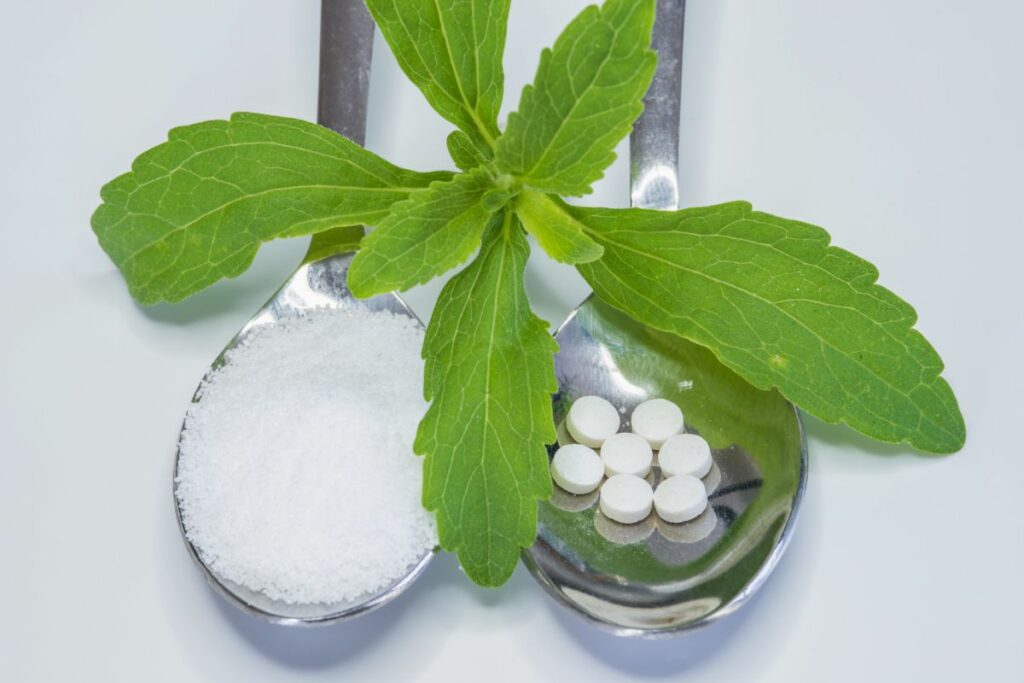
🙋🏻 Stevia Safety Concerns
Stevia’s early years were filled with obstacles following initial restrictions due to carcinogen concerns. Although in 2008, the US FDA labeled stevia as Generally Recognized as Safe (GRAS) in the United States.
In other parts of the world, stevia sweeteners were approved by the European Union in 2011 and Canada in 2012 and likewise deemed safe by both Japan’s Ministry of Health and Food Standards Australia New Zealand (FSANZ).
Such alternative sweeteners are also currently allowed for usage in more than 60 countries based on the findings of these global authorities.
The European Food Safety Authority (EFSA), the Joint Food and Agriculture Organization of the United Nations (FAO), and the World Health Organization Expert Committee on Food Additives (JECFA) have concluded that high-purity steviol glycosides are safe for ingestion within the recommended daily intake (ADI) level.
This steviol Acceptable Daily Intake (ADI) level was also established by various groups to be 4 milligrams (mg) per kilogram of body weight or 12 mg of stevia extract per kilogram of body weight.
Safety concerns can also arise amongst stevia products and brands as purity and quality requirements fluctuate between them. With this being the case throughout the food industry, it's increaisngly important to seek out more reputable brands and read product labels to ensure that there are no additives or fillers.
On the flip side, the FDA and JECFA have established that high-purity stevia sweeteners within the ADI are safe for children to consume, so safety and use are really dependent on the type of user.
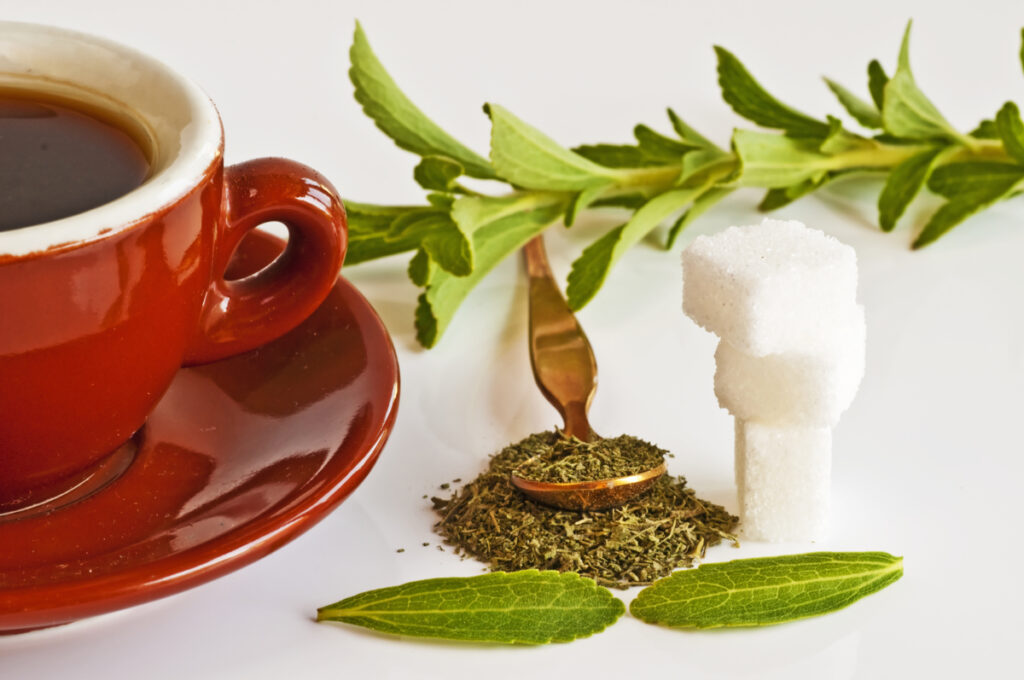
✨ Stevia Health Benefits
Scientific research has shown that highly purified stevia side effects aren't noticable or significant when used as a sweetener or to flavor foods.
In fact, the current data on the pharmacological effects of stevia shows the opposite. It has promising anti-diabetic, anti-hypertension, anti-cancer, decreased obesity, and improved metabolic and oxidative properties.
Another benefit of stevia is that it can aid in the prevention of kidney disease. In a 2018 clinical trial of patients with chronic kidney disease, supplements that contained stevia actually lowered creatinine, uric acid, blood sugar, and microalbumin levels.
Stevia sweeteners are not cariogenic, meaning they don’t increase risk of dental caries. They’re also thought to have antitumor, antifungal, and antibacterial characteristics, which may allow them to be used to treat circulatory and liver problems.
Stevia Drawbacks
Possible side effects of stevia consumption may manifest, like nausea, bloating, low blood pressure, and hormone disruption. This is due to the addition of sugar alcohols in the manufacturing of certain stevia sweeteners.
Another is that people who turn to non-nutritive sweeteners may tend to overindulge in food because it was prepared with zero-calorie sweeteners. Overeating may lead to you consuming more calories than are normally needed by your body to sustain itself.
Stevia is widely used as a dietary supplement, though according to some research, rather than assisting diet, it has been linked to negative outcomes in rodent offspring and infants of pregnant women who consumed non-nutritive sweeteners such as stevia (and aspartame).
These outcomes include disturbed gut microbiota, impaired glucose homeostasis, and increased risk of obesity. Though certainly, more research is needed, especially in humans, to further verify this information and establish parameters of safe consumption.
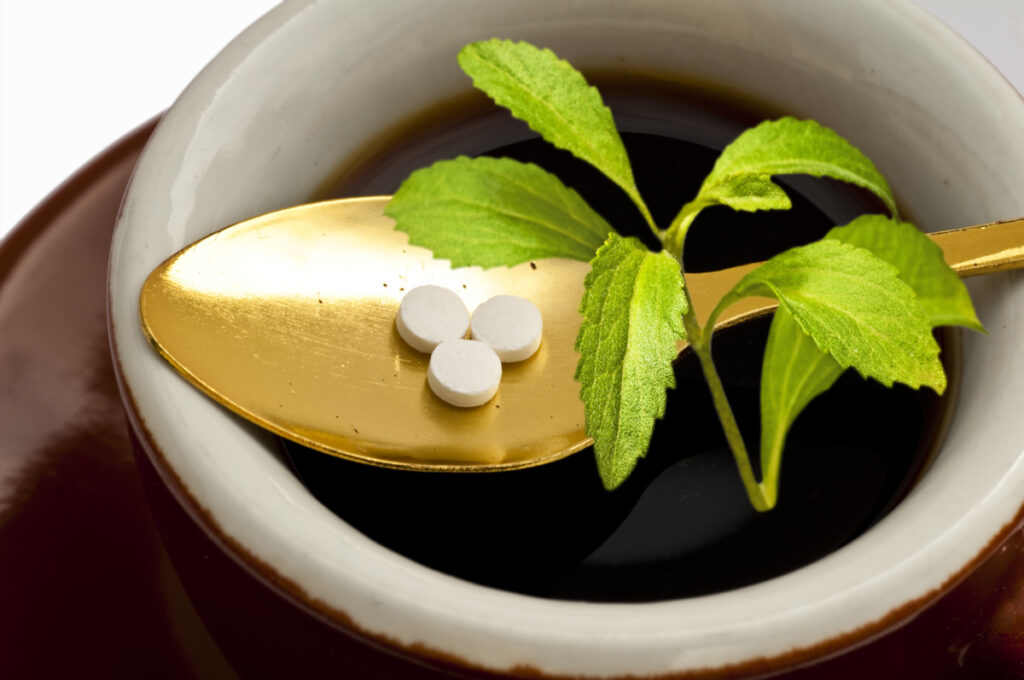
🤔 How Is Stevia Used?
Stevia is a no-calorie sugar substitute that can also be called a high-intensity sweetener, non-nutritive sweetener, or low-calorie sweetener.
Like most other no-calorie sweeteners, stevia sweeteners are very sweet, making them perfect for most, if not all, food or beverages that require sugar. Though some brands may still have that slightly bitter taste that’s quite common in artificial sweeteners.
Aside from this consideration, here are some of the common ways we can consume or use stevia as part of our diet.
In Commercially Made Foods and Drinks
With a recent emphasis on lowering added sugar consumption, the number of food and beverage products incorporating low-calorie sweeteners has expanded. Stevia is one of these sweeteners that are often used in FMCG as an ingredient in beverages like diet sodas, light or low-sugar juice, and flavored drinks.
It’s also prominent in keto versions of condiments such as ketchup, mayonnaise, barbecue sauce, and salad dressings. Many light or zero-sugar dairy products also contain stevia, such as ice cream, milk, and yogurt, so it’s always best to check the label to know for sure.
My own favorite stevia-sweetened products are the electrolytes I take to help keep POTS symptoms at bay, without taking in a lot of inflammatory sugar.
In Baking and Cooking
To lower the total sugar, calorie, and carb content of sugary foods, these days stevia is commonly used to replace sugar in baking and cooking recipes. Cakes, cookies, bars, muffins, and bread all benefit from its properties.
A good rule of thumb is to swap out a teaspoon of liquid stevia or two tablespoons of powdered stevia for every cup of sugar in baking. While for savory dishes like sauces and salad dressings, you can swap a few drops of liquid stevia or ½ teaspoon of powdered stevia for a teaspoon of sugar.
Stevia sweeteners are effective in high-heat recipes since they’re stable at higher temperatures, though keep in mind that using stevia instead of sugar may affect the volume and texture in your recipes, depending on the amount you swap.
To find out how sweet the product that you have is, you need to read the manufacturer’s recommendation. Likewise, once you've bought it you can give it a taste to gauge the sweetness and how much to add. You can also add a few drops and then check the flavor of your recipe.
As a Calorie-Free Replacement for Sugar in Beverages
Instead of sugar or artificial sweeteners, add a few drops of liquid stevia or a half teaspoon of powdered stevia sweetener to beverages like coffee, tea, or lemonade to add a touch of sweetness without the calories.
As a Sugar Substitute in Breakfast or Snacks
Stevia goes well in cereal, yogurt, smoothie bowls, or just on plain fruits, so if you’re looking to sweeten your usual breakfast or snack foods, you can sprinkle stevia powder or add a few drops of liquid sweetener to it.
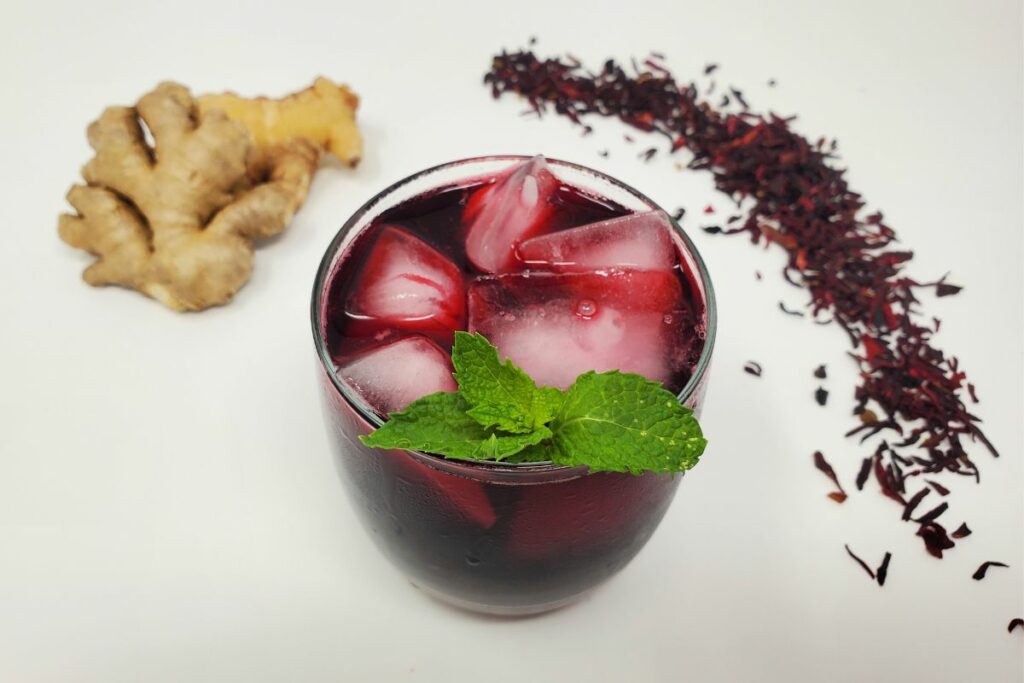
❓ Frequently Asked Questions
This answer depends on the type of stevia product that you have. Some stevia sweeteners mixed with sugar alcohols are 1:1 sugar replacements because they were processed to be a direct replacement for sugar, while others are up to a 10:1 swap. As a general guideline, replace one cup of table sugar with one teaspoon of liquid stevia or two tablespoons of powdered stevia, or one teaspoon of table sugar with a few drops of liquid stevia or a half teaspoon of powdered stevia.
In order to improve the taste and consistency of stevia (in comparison to table sugar), manufacturers process them and add bulking sweeteners like sugar alcohols allulose, erythritol, maltodextrin, glucose, inulin, xylitol, etc, to mimic the volume of table sugar. This can be especially helpful in most baking recipes.
While using stevia can reduce calories in foods and drinks, stevia sweeteners, especially those mixed with sugar alcohols, may have some adverse effects. Some possible side effects include nausea, bloating, low blood pressure, and hormone disruption. Even though stevia has fewer potential side effects, it’s best to consume pure leaf extract stevia instead of stevia sweeteners and use them in moderation.
Yes, stevia is safe to consume and is allowed for usage in more than 60 countries. Especially if you seek pure stevia leaf extract, stevia can contribute to your overall health while lowering your sugar, calorie, and carb intake. According to the World Health Organization, the acceptable daily intake (ADI) of stevia is 4 milligrams per kilogram of body weight, and according to an FDA estimate, a 150-pound person might safely consume up to 10 packets of stevia per day - far more than you actually require, given its strong sweetness.

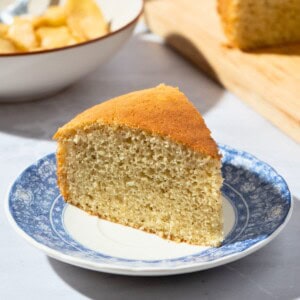











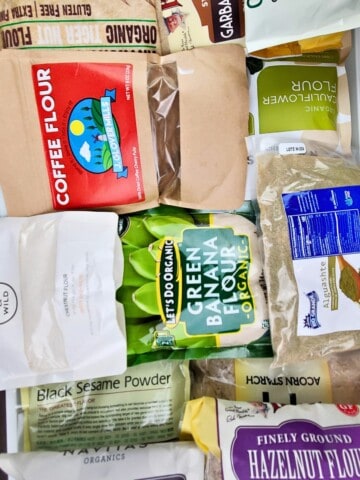
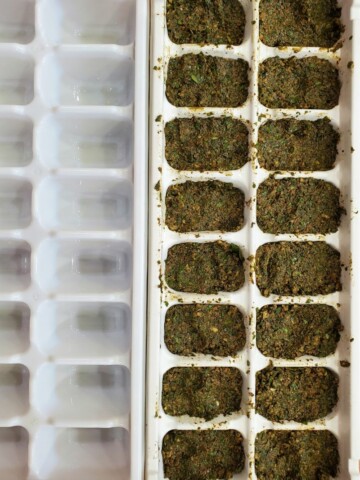

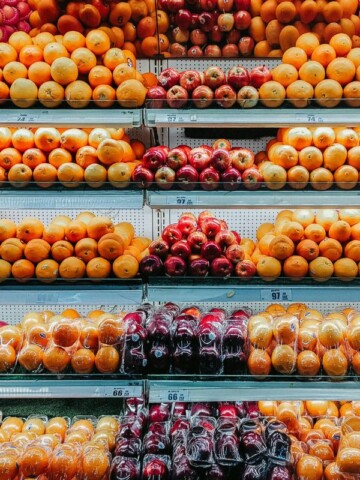
Comments
No Comments